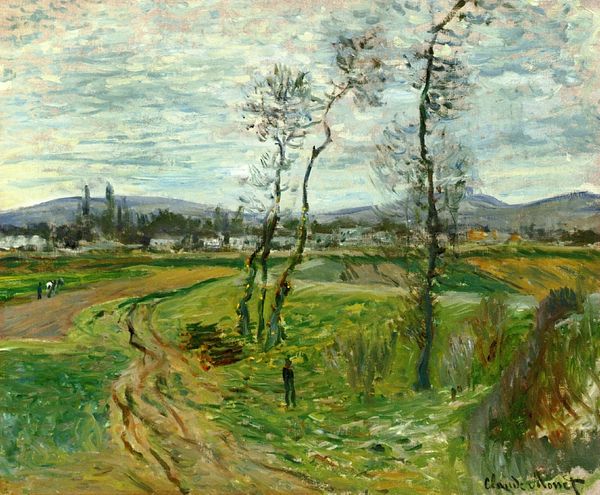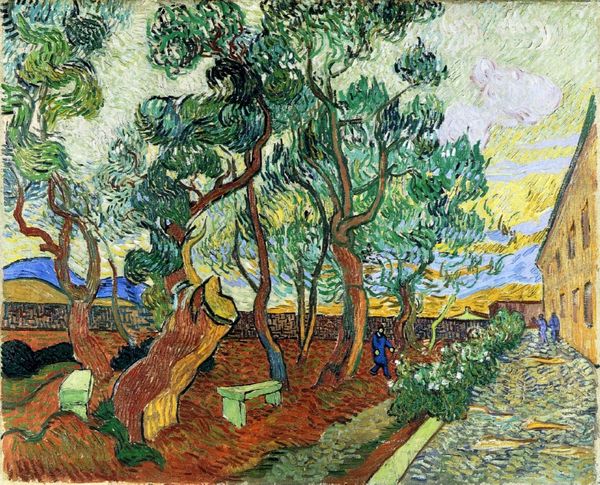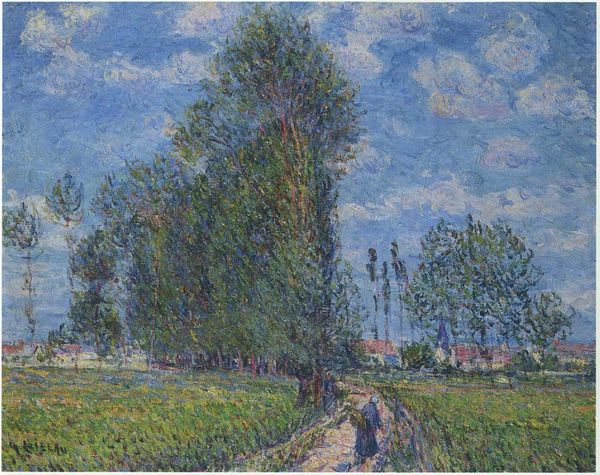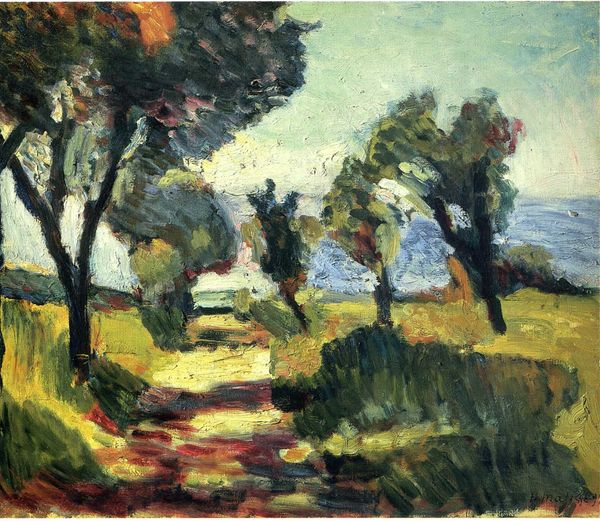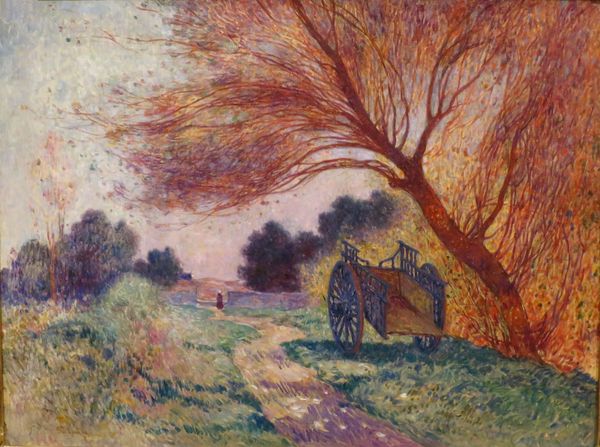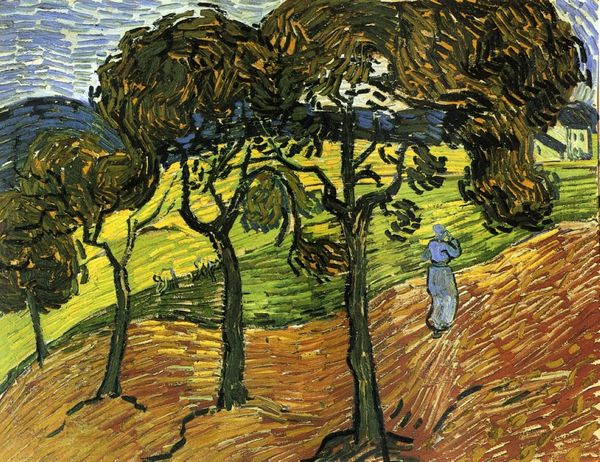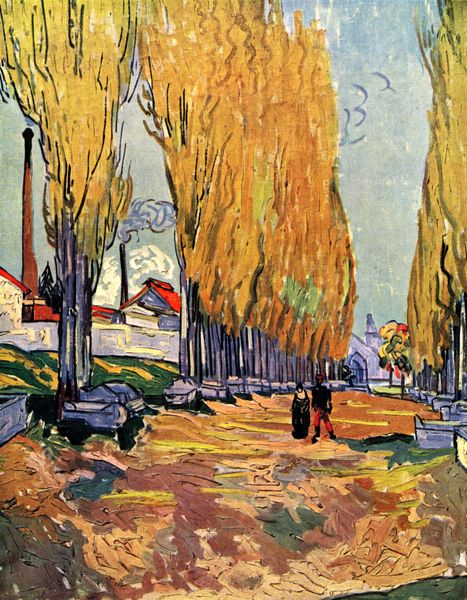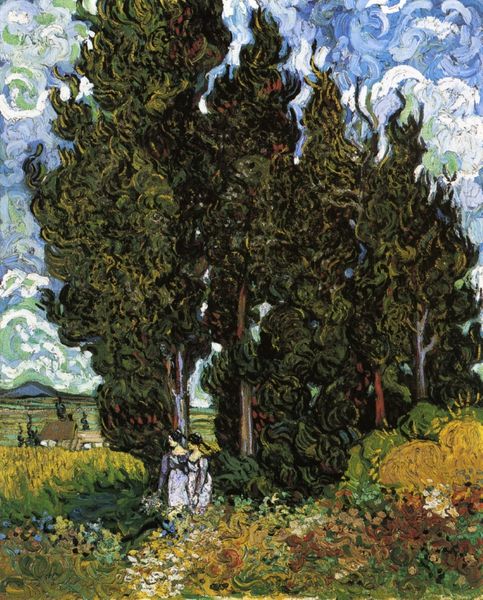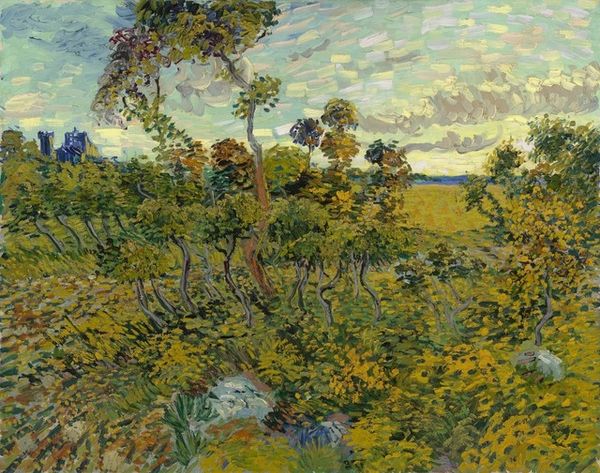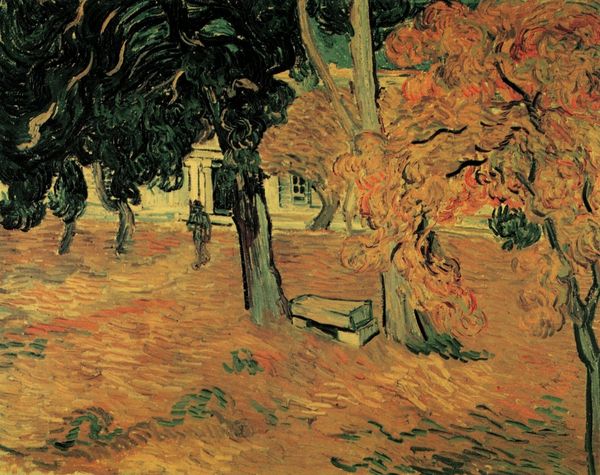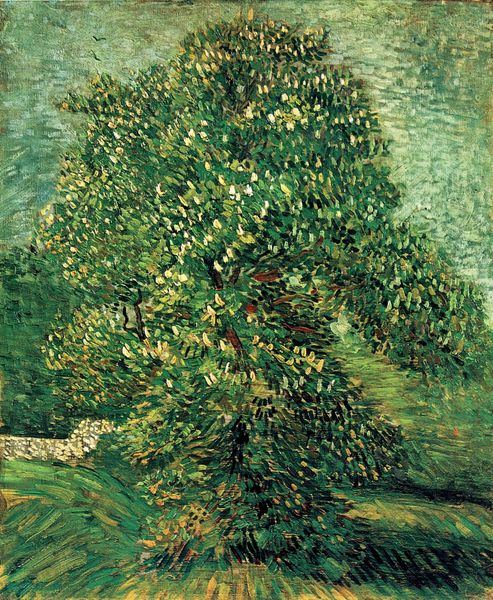
painting, plein-air, oil-paint, impasto
#
painting
#
impressionism
#
plein-air
#
oil-paint
#
landscape
#
river
#
impressionist landscape
#
oil painting
#
impasto
#
orientalism
#
genre-painting
#
post-impressionism
#
natural environment
#
modernism
Copyright: Public Domain: Artvee
Curator: Vincent van Gogh's "Along the Seine," created in 1887, depicts a solitary figure walking by the river under a row of trees. Editor: Immediately, I'm struck by the quiet stillness. The impasto strokes feel almost like whispers, giving the whole scene a dreamlike quality, despite the mundane subject matter. Curator: Indeed. This work, from Van Gogh's Parisian period, showcases the influence of Impressionism, though it’s already hinting at the post-Impressionist style he would soon pioneer. Van Gogh was interested in how working-class Parisians engaged with leisure time. Editor: Yes, there is this undeniable stillness, but if we look through the lens of labor, we may appreciate it as more than the portrayal of the leisure of the upper classes and the culture that sustained them. I notice an unrefined aspect in its mark-making—not necessarily intentional—but still valuable, suggesting a departure from the conventions of high art, which may make art and the possibility of art available to anyone. Curator: That rawness is key. The perspective feels somewhat skewed, adding to this tension. One can consider the influence of Japanese prints and woodblocks, with their flattening of space, a trend embraced by many artists in Paris at this time. Editor: And yet, the light in "Along the Seine" is quintessentially European, as seen in the shadows cast. It plays such an interesting role. It reminds me of those early experiments in photography trying to grasp reality; the trees act as a kind of membrane filtering and modulating light. I like the suggestion of an unseen space for growth, a possible resistance of what it means to categorize oneself within the limitations of modern society. Curator: Absolutely. Beyond the light and shadow play, think about the institutional settings in which art from the modern period was shown, especially after the establishment of museums as public-facing sites for social control, and how such "realistic" yet intimate and accessible portraits of landscape would have been perceived. It speaks volumes about class, about identity, about labor. Editor: I completely agree. The painting speaks volumes about access and power. As such, a painting like this should spur discussion today. Curator: I concur, thinking about the relationship between public and private spaces, which is extremely crucial for a greater awareness about modern class relations and what an individual means for social harmony. Editor: So glad we had a chance to unpack this!
Comments
No comments
Be the first to comment and join the conversation on the ultimate creative platform.
